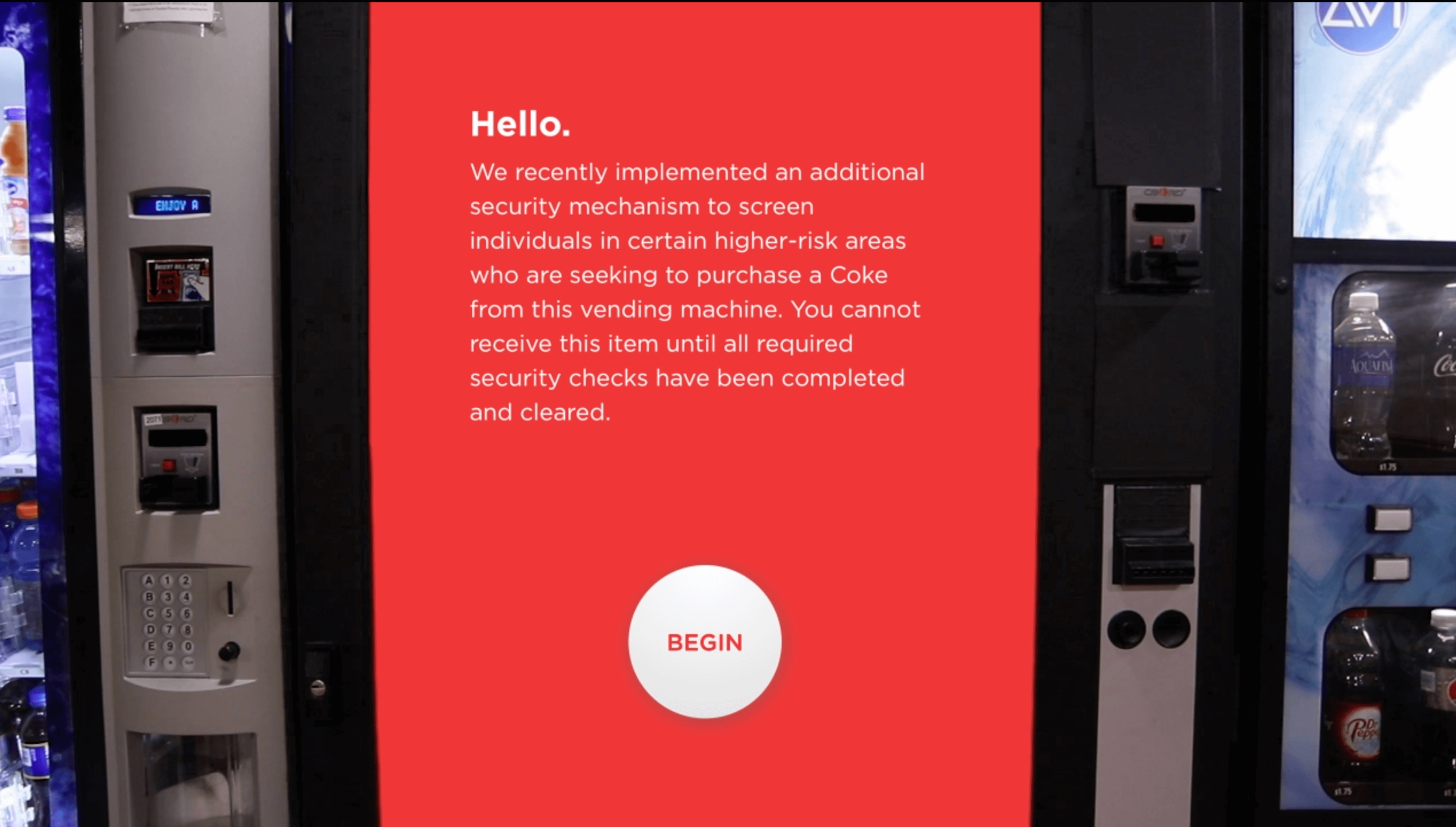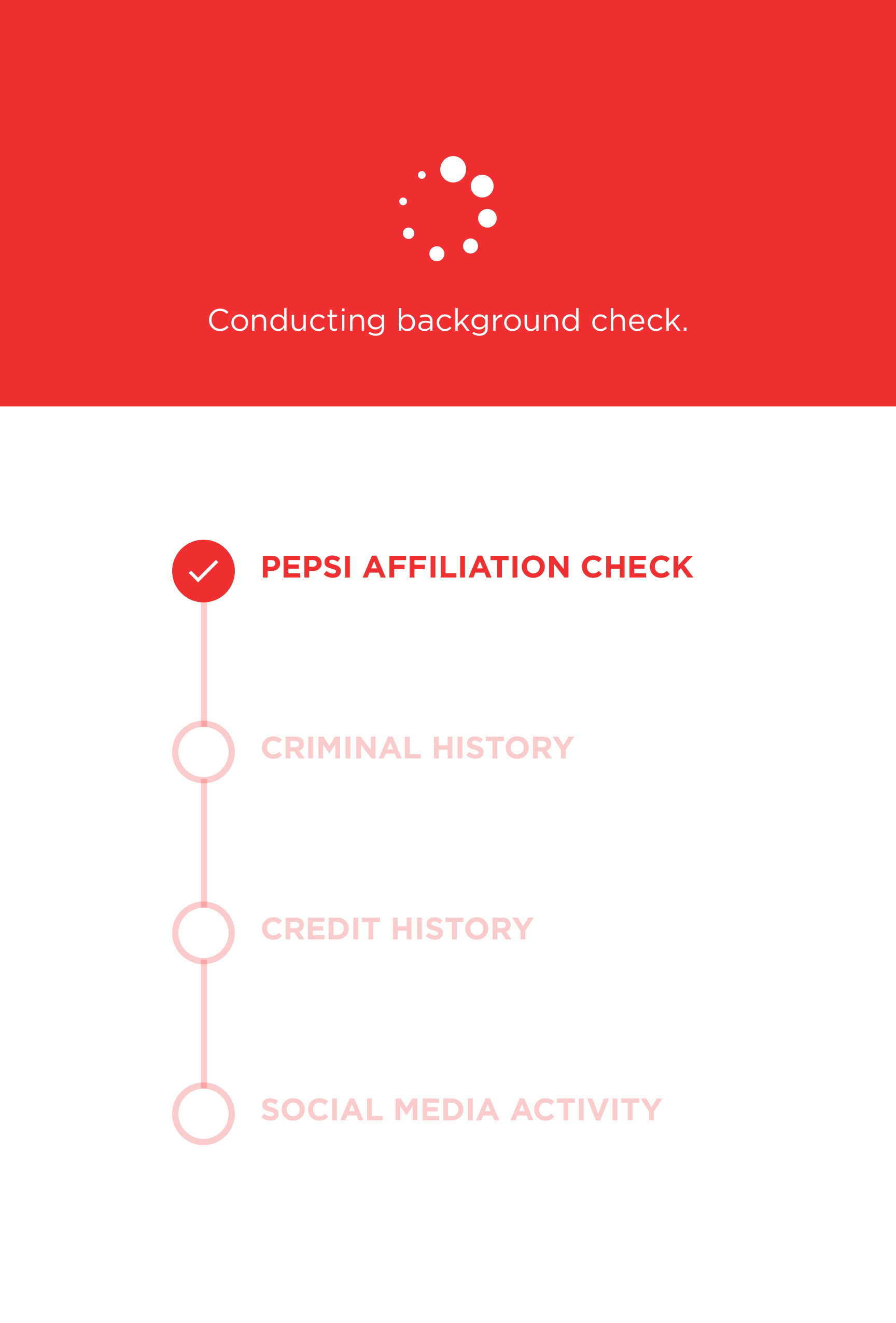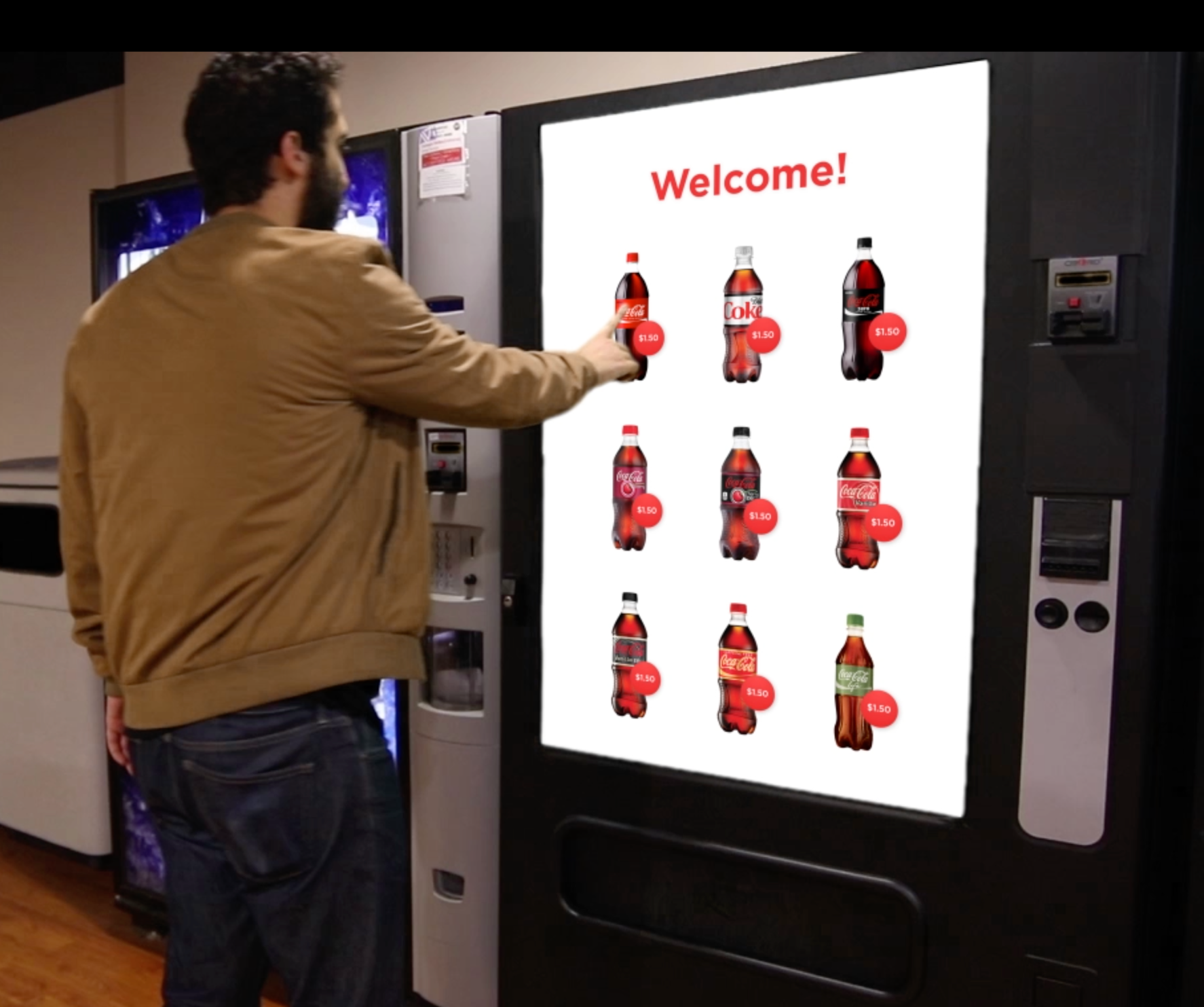CokeforaHome: Fostering empathy through a vending machine
This project explored the idea of a dissonant system and its implication to user. What happens when a vending machine does not behave as expected? (How) Does the machine’s behavior impact the user’s emotional state? Is there a design opportunity to consider? (Academic project at CMU)
DURATION: 2 Weeks
MY ROLE: Concept generation, UX Design, Concept Video, Label Design
TOOLS: After Effects, Illustrator, Audacity
TEAM: Hajira Qazi, Zach Bachiri
Proof of Concept Video
(Runtime 3:11 mins | Caution: It might get loud)
DESIGN PROCESS
01 IDEATION
What would be the value in dissonance?
We started the process by brainstorming ideas for a vending machine that could communicate the value in its dissonance and create a unique experience for the user. Amongst the group, we discovered a common interest in concepts that could employ dissonance to spark speculations about our behavior and biases.
We explored the topic of privilege in more detail and quickly chalked out some more concepts before we decided to use dissonance as a tool for activism. The idea was to address people’s current mental model towards the refugees seeking asylum in the United States and cultivate an empathetic environment. We wanted to use this as an opportunity to initiate discussions around the issue and clear misconceptions by sharing a broader picture of the situation.
How might we employ dissonance to design a vending machine that could create empathy by putting us in someone else’s shoes?
02 NARRATIVE
We decided to design a Coke vending machine that critiqued the ongoing rhetoric around refugees that perceives them as a threat. The hope was to make people aware about the extremely exhaustive and lengthy vetting process that refugees have to under go to enter or get cleared for resettlement in the United States.
Official refugee screening process. Source: worldrelief.org
Why a COKE vending machine?
Coke is a popular, widely accepted brand in the United States. It emanates a strong sense of loyalty from its consumers which led us to use “the cult of Coke” as a metaphor. We used this to draw an analogy between Coke and nationalism—being American. Carrying forward the metaphor, we established the idea of Pepsi as the “other—the enemy of the state” and any affiliation to it as a threat.
In this context, people purchasing coke from this vending machine are screened to join an elite Coke club and will be “vetted” to ascertain their eligibility before they can receive their bottle of cola.
To recreate the experience of being scrutinized and vetted, we drew inspiration from the current refugee screening process and decided to include the following steps in our interaction:
Background check
In-person interview
Medical screening
Cultural orientation
03 INTERACTION
How does the experience unfold?
The idea was to build in dissonance that leads to a change in emotional state. The most dissonant moments in the interaction are intended to shift your perspective and make you question what/why.
User Flow
We started with understanding the existing interaction of using a vending machine and outlined the user flow of vending a coke from the machine.
Key Interaction Steps
1. The interaction starts off as a regular vending experience where the user can make a selection and pay for it.
2. Soon after the user swipes his card, the screen shows a progress bar that appears to be capturing the user's biographic data. This throws the user off-guard and confuses him but at the same time, it gets the user's attention.
3. In the next screen, the user is informed that he'll be screened to evaluate if he meets the eligibility criteria to receive a Coke.
4. In the next stage, the user is put through a brief verbal interview. The tone of communication is very impersonal, cold and distant.
5. This is followed by a medical screening which seems ridiculous but needs to be complied with.
6. Based on the level of participation, the machine decides if the users clear the screening or not. If they do, they are put through a cultural orientation (they are made to watch a monatge of Coke ad).
7. After the cultural orientation, the user is directed to collect his Coke.
The interaction could end either in acceptance or rejection.
If accepted, the users are put through a cultural orientation before they can receive their Coke and an acceptance in to the 'exclusive Coke club'.
The user is notified of a rejection only after he has been through the complete screening process. The message at the end is non-informative and does not offer any concrete explanation for the rejection or provides an option for contesting the decision. The brusque tone of the communication is deliberately designed to mimic the feelings of uncertainty, trepidation, discomfiture, scrutiny that refugees experience during the vetting process.
Acceptance Message
Rejection Message
User Interface Screens
04 CUSTOM LABEL— TAKEAWAY
Can we extend the Interaction to allow time for reflection?
We deliberately designed the interaction to not explain or justify the reason behind its unexpected behavior to the user at any point. Instead, we created a custom label for beverages that get vended at the end.
These custom labels are based off Coca-Cola’s ‘Share a Coke’ campaign and carry forward the original idea of sharing, building connections and creating a sense of community. Each bottle features the name and a short description of a person seeking a home in the United States. We hope that sharing personal stories would help people to relate with refugees on a more human level and not see them as a threat.
The label allows to continue the dialogue with users long after their initial interaction with the vending machine is over, giving them more time to reflect on their experience. It also features information about the refugee crisis that helps counter misinformation about the situation & bring general awareness.
Take-away items can serve as a reminder of the experience and embody a tangible touchpoint to either the experience or a connection to the larger issue/context of the experience.
05 NEXT STEPS
What if it wasn't just a proof of concept?
Coca-cola is known for its larger-than-life campaigns and wide publicity. Can we use Coke as a catalyst for social awareness to provide an accessible entry point that can open lines of awareness and communication?
If envisioned as an official campaign, the hashtag #cokeforahome on the label could help to promote the cause on social media platforms and pilot conversations and initiatives around the refugee crisis. A portion of the profits from the vending machine sale then can be donated to UNHCR to further the refugee cause.
This could also be positioned as a community building experience where new refugees settlements are being made. It could serve as a tool for integration with the local community.
Challenges
What would be the technological requirements? Would we actually collect data, what would be the purpose? Would Automatic speech recognition with a dialog flow be sufficient or would we need Natural Language processing to enable a smooth interaction? What will be the micro interactions involved?
All brand names, trademarks and images related to Coca-cola are copyright of their respective owners.
MORE PROJECTS








































